Nature Knows and Psionic Success
God provides
This One Simple Brain Hack Might Boost Learning and Improve Mental Health

Curiosity supercharges people’s memory for paintings they saw while pretending to be an art thief
DURHAM, N.C. – A simple shift from a high-pressure mindset to a curious one improves people’s memory.
New research from Duke found that people who imagined being a thief scouting a virtual art museum in preparation for a heist were better at remembering the paintings they saw, compared to people who played the same computer game while imagining that they were executing the heist in-the-moment.
These subtle differences in motivation — urgent, immediate goal-seeking versus curious exploration for a future goal — have big potential for framing real-world challenges such as encouraging people to get a vaccine, prompting climate change action, and even treating psychiatric disorders.
The findings appear in the July 25 issue of the journal Proceedings of the National Academy of Sciences.
Alyssa Sinclair, Ph.D. ’23, a postdoctoral researcher working in the lab of Duke Institute for Brain Sciences director Alison Adcock, Ph.D., M.D. , recruited 420 adults to pretend to be art thieves for a day. The participants were then randomly assigned to one of two groups and received different backstories.
“For the urgent group, we told them, ‘You’re a master thief, you’re doing the heist right now. Steal as much as you can!’,” Sinclair said. “Whereas for the curious group, we told them they were a thief who’s scouting the museum to plan a future heist.”
After getting these different backstories, however, participants in the two groups played the exact same computer game, scored the exact same way. They explored an art museum with four colored doors, representing different rooms, and clicked on a door to reveal a painting from the room and its value. Some rooms held more valuable collections of art. No matter which scenario they were pretending to be in, everyone earned real bonus money by finding more valuable paintings.
The impact of this difference in mindset was most apparent the following day. When participants logged back in, they were met with a pop quiz about whether they could recognize 175 different paintings (100 from the day before, and 75 new ones). If participants flagged a painting as familiar, they also had to recall how much it was worth. “Watch out for the security guard!” A video of the computer game shows how participants chose between four different colored doors to reveal different paintings (and their value). Participants had to avoid being spotted by a security guard by quickly pressing space bar when he popped up, as an attention check. (Credit: Alyssa Sinclair) Sinclair and her co-author, Duke psychology & neuroscience graduate student Candice Yuxi Wang, were gratified after they graded the tests to see their predictions had played out.
“The curious group participants who imagined planning a heist had better memory the next day,” Sinclair said. “They correctly recognized more paintings. They remembered how much each painting was worth. And reward boosted memory, so valuable paintings were more likely to be remembered. But we didn’t see that in the urgent group participants who imagined executing the heist.”
Urgent group participants, however, had a different advantage. They were better at figuring out which doors hid more expensive pieces, and as a result snagged more high value paintings. Their stash was appraised at about $230 more than the curious participants’ collection.
The difference in strategies (curious versus urgent) and their outcomes (better memory versus higher-valued paintings) doesn’t mean one is better than the other, though.
“It’s valuable to learn which mode is adaptive in a given moment and use it strategically,” Dr. Adcock said.
For example, being in an urgent mode might be the best option for a short-term problem.
“If you’re on a hike and there’s a bear, you don’t want to be thinking about long-term planning,” Sinclair said. “You need to focus on getting out of there right now.”
Opting for an urgent mindset might also be useful in less grisly scenarios that require short-term focus, Sinclair explained, like prompting people to get a covid vaccine.
For encouraging long-term memory or action, stressing people out is less effective.
“Sometimes you want to motivate people to seek information and remember it in the future, which might have longer term consequences for lifestyle changes,” Sinclair said. “Maybe for that, you need to put them in a curious mode so that they can actually retain that information.”
Sinclair and Wang are now following up on these findings to see how urgency and curiosity activate different parts of the brain. Early evidence suggests that, by engaging the amygdala, an almond-shaped brain region best known for its role in fear memory, “urgent mode” helps form focused, efficient memories. Curious exploration, however, seems to shuttle the learning-enhancing neurochemical dopamine to the hippocampus, a brain region crucial for forming detailed long-term memories.
With these brain results in mind, Dr. Adcock is exploring how her lab’s research might also benefit the patients she sees as a psychiatrist.
“Most of adult psychotherapy is about how we encourage flexibility, like with curious mode” Dr. Adcock said. “But it’s much harder for people to do since we spend a lot of our adult lives in an urgency mode.”
These thought exercises may give people the ability to manipulate their own neurochemical spigots and develop “psychological maneuvers,” or cues that act similar to pharmaceuticals, Dr. Adcock explained.
“For me, the ultimate goal would be to teach people to do this for themselves,” Dr. Adcock said. “That’s empowering.”
Support for the research came from a Duke Health Scholars Award from Duke University.
CITATION: “Instructed Motivational States Bias Reinforcement Learning and Memory Formation,” Alyssa H. Sinclair, Yuxi C. Wang, R. Alison Adcock. Proceedings of the National Academy of Sciences, July 25 2023. DOI: 10.1073/pnas.2304881120
Using olive oil can ‘boost’ brain health, says new study

Olive oil may help protect the brain from inflammation and reduce the risk of dying from dementia, says a new study. (Getty Images) An estimated 5.8 million people in the U.S. have dementia, and those numbers are only expected to rise. With that, many people want to do what they can to lower the risk that they’ll develop the debilitating disease over time. While dementia is a complicated condition that likely has several causes, a new study suggests a simple lifestyle change can help lower your risk of dying from dementia: incorporating olive oil into your diet. What the study says
The study , which was conducted by researchers at Harvard University and presented at the American Society for Nutrition’s Nutrition 2023 conference, found that those who used olive oil in place of condiments such as margarine and mayonnaise had a lowered risk of dying from dementia. What are the key findings?
The study analyzed dietary and health data from 60,582 women and 31,801 men who didn’t have cardiovascular disease and cancer at the start of the study, along with death records. Over a 28-year follow-up, 4,749 people died of dementia.
The researchers found that having more than 7 grams a day of olive oil (or about half a tablespoon) was linked with a 25% lowered risk of dying of dementia compared to people who never or rarely had olive oil. The scientists also discovered that swapping 1 teaspoon of margarine and mayo with the equivalent amount of olive oil a day was linked with an up to 14% lowered risk of dying of dementia.
“In U.S. adults, higher olive oil intake was associated with a moderately lower risk of fatal dementia, irrespective of diet quality,” the researchers concluded. “Increasing olive oil intake in place of margarine and mayonnaise represents a potential strategy to reduce dementia mortality risk.” What experts think
It’s important to note that the study didn’t find that having olive oil alone actually lowers your risk of dying from dementia — instead, it found a link between people who have more olive oil and a lowered risk of dying from dementia. However, experts say there may be something to this.
“Olive oil is rich in antioxidant compounds such as polyphenols and vitamin E, which are known to combat oxidative stress,” registered dietitian , co-owner of , tells Yahoo Life. “Oxidative stress is a key factor in the pathogenesis of several neurodegenerative disorders, including Alzheimer’s disease, which is the most common form of dementia. From this perspective, the study’s findings make sense: Antioxidants in olive oil could potentially help protect the brain by reducing oxidative stress and inflammation.”
Olive oil contains a lot of monounsaturated fatty acids, which are linked to cardiovascular health and brain health, registered dietitian , an associate professor in the department of clinical and preventive nutrition sciences at Rutgers School of Health Professions, tells Yahoo Life. “Vegetable oils — soy, sunflower, peanut — and margarine, on the other hand, contain primarily polyunsaturated fatty acids; butter and coconut oils contain more saturated fatty acids,” she says.
“Some antioxidant compounds in olive oil can cross the blood-brain barrier, potentially having a direct effect on the brain,” lead author of the study and registered dietitian , a postdoctoral researcher at the Harvard T.H. Chan School of Public Health, tells Yahoo Life.
But experts caution against thinking that olive oil is the sole solution for preventing dementia. “It is hard to believe that one food product can influence overall brain health substantially,” , medical director in the department of neurology at Michigan State University, tells Yahoo Life. “It is more likely that lifestyle and dietary choices make the difference.”
If you like olive oil and want to incorporate more of it into your diet, registered dietitian , author of recommends being “pretty liberal” with its use. “When we look at studies on health impacts of olive oil, you’ll very commonly see people have up to four tablespoons a day,” she tells Yahoo Life. “I tell my clients to make olive oil their primary cooking oil, and their primary oil for dressings and garnishes.”
Quantum material exhibits ‘non-local’ behavior that mimics brain function
We often believe computers are more efficient than humans. After all, computers can complete a complex math equation in a moment and can also recall the name of that one actor we keep forgetting. However, human brains can process complicated layers of information quickly, accurately, and with almost no energy input: recognizing a face after only seeing it once or instantly knowing the difference between a mountain and the ocean. These simple human tasks require enormous processing and energy input from computers, and even then, with varying degrees of accuracy.
Creating brain-like computers with minimal energy requirements would revolutionize nearly every aspect of modern life. Funded by the Department of Energy, Quantum Materials for Energy Efficient Neuromorphic Computing (Q-MEEN-C) — a nationwide consortium led by the University of California San Diego — has been at the forefront of this research.
UC San Diego Assistant Professor of Physics Alex Frañó is co-director of Q-MEEN-C and thinks of the center’s work in phases. In the first phase, he worked closely with President Emeritus of University of California and Professor of Physics Robert Dynes, as well as Rutgers Professor of Engineering Shriram Ramanathan. Together, their teams were successful in finding ways to create or mimic the properties of a single brain element (such as a neuron or synapse) in a quantum material.
Now, in phase two, new research from Q-MEEN-C, published in Nano Letters , shows that electrical stimuli passed between neighboring electrodes can also affect non-neighboring electrodes. Known as non-locality, this discovery is a crucial milestone in the journey toward new types of devices that mimic brain functions known as neuromorphic computing.
“In the brain it’s understood that these non-local interactions are nominal — they happen frequently and with minimal exertion,” stated Frañó, one of the paper’s co-authors. “It’s a crucial part of how the brain operates, but similar behaviors replicated in synthetic materials are scarce.”
Like many research projects now bearing fruit, the idea to test whether non-locality in quantum materials was possible came about during the pandemic. Physical lab spaces were shuttered, so the team ran calculations on arrays that contained multiple devices to mimic the multiple neurons and synapses in the brain. In running these tests, they found that non-locality was theoretically possible.
When labs reopened, they refined this idea further and enlisted UC San Diego Jacobs School of Engineering Associate Professor Duygu Kuzum, whose work in electrical and computer engineering helped them turn a simulation into an actual device.
This involved taking a thin film of nickelate — a “quantum material” ceramic that displays rich electronic properties — inserting hydrogen ions, and then placing a metal conductor on top. A wire is attached to the metal so that an electrical signal can be sent to the nickelate. The signal causes the gel-like hydrogen atoms to move into a certain configuration and when the signal is removed, the new configuration remains.
“This is essentially what a memory looks like,” stated Frañó. “The device remembers that you perturbed the material. Now you can fine tune where those ions go to create pathways that are more conductive and easier for electricity to flow through.”
Traditionally, creating networks that transport sufficient electricity to power something like a laptop requires complicated circuits with continuous connection points, which is both inefficient and expensive. The design concept from Q-MEEN-C is much simpler because the non-local behavior in the experiment means all the wires in a circuit do not have to be connected to each other. Think of a spider web, where movement in one part can be felt across the entire web.
This is analogous to how the brain learns: not in a linear fashion, but in complex layers. Each piece of learning creates connections in multiple areas of the brain, allowing us to differentiate not just trees from dogs, but an oak tree from a palm tree or a golden retriever from a poodle.
To date, these pattern recognition tasks that the brain executes so beautifully, can only be simulated through computer software. AI programs like ChatGPT and Bard use complex algorithms to mimic brain-based activities like thinking and writing. And they do it really well. But without correspondingly advanced hardware to support it, at some point software will reach its limit.
Frañó is eager for a hardware revolution to parallel the one currently happening with software, and showing that it’s possible to reproduce non-local behavior in a synthetic material inches scientists one step closer. The next step will involve creating more complex arrays with more electrodes in more elaborate configurations.
“This is a very important step forward in our attempts to understand and simulate brain functions,” said Dynes, who is also a co-author. “Showing a system that has non-local interactions leads us further in the direction toward how our brains think. Our brains are, of course, much more complicated than this but a physical system that is capable of learning must be highly interactive and this is a necessary first step. We can now think of longer range coherence in space and time”
“It’s widely understood that in order for this technology to really explode, we need to find ways to improve the hardware — a physical machine that can perform the task in conjunction with the software,” Frañó stated. “The next phase will be one in which we create efficient machines whose physical properties are the ones that are doing the learning. That will give us a new paradigm in the world of artificial intelligence.”
This work is primarily supported by Quantum Materials for Energy Efficient Neuromorphic Computing, an Energy Frontier Research Center funded by the U.S. Department of Energy, Office of Science, Basic Energy Sciences and funded by the U.S. Department of Energy (DE-SC0019273). A full list of funders can be found in the paper acknowledgements.
A tiny bit of electricity can help some people with a traumatic brain injury
JUANA SUMMERS, HOST:
People who have had a severe traumatic brain injury often struggle to remember recent events or conversations. So brain scientists are looking for ways to help. NPR’s Jon Hamilton reports on an approach that delivers tiny pulses of electricity to improve short-term memory.
JON HAMILTON, BYLINE: Most traumatic brain injuries, or TBIs are the mild type – a concussion. A fall or blow to the head causes symptoms that typically last a few days or weeks. Severe TBIs are far less common. But Dr. Ramon Diaz-Arrastia says they can permanently impair a person’s thinking and short-term memory.
RAMON DIAZ-ARRASTIA: We see this a lot. This is a very common source of disability.
HAMILTON: Diaz-Arrastia directs the TBI Clinical Research Center at the University of Pennsylvania. Among his patients are young men who were injured in a car or motorcycle crash. He says they often recover physically, but not mentally.
DIAZ-ARRASTIA: We have patients, for example, whose family cannot leave them alone at home because, you know, they will turn on the stove and forget to turn it off.
HAMILTON: Diaz-Arrastia says even less-disabled patients are frequently unable to go back to work.
DIAZ-ARRASTIA: People that are having trouble remembering what they read five minutes ago or having trouble remembering what they were told five minutes ago are going to have a lot of problem holding the vast majority of jobs.
HAMILTON: So Diaz-Arrastia has been working with a team of scientists to restore damaged memory. One of them is Michael Kahana, a professor of psychology at Penn. For years, Kahana has been studying why even a healthy person’s memory works well sometimes and not so well other times.
MICHAEL KAHANA: My memory is different than it was an hour ago or than it will be an hour from now. And it’s that variability which may open the door to a whole host of potential ways that we can help people improve.
HAMILTON: By tweaking the brain so that it performs as well as it does in the best hour of its best day. Kahana’s team started out by having a computer learn to recognize the electrical signals associated with retrieving a memory.
KAHANA: We can predict in a moment-to-moment basis when memory will fail or succeed within a given person.
HAMILTON: Next, the team devised a system that could deliver a precisely timed pulse of electricity to a brain area just behind the ear.
KAHANA: It would detect that you’re about to have a memory lapse, and it would try to jostle the system into a state that’s more conducive to good function.
HAMILTON: The system worked in a small group of people without a history of TBI. That’s when Kahana teamed up with Diaz-Arrastia, the TBI expert, to put together a new experiment.
KAHANA: So in this study, for the first time, we actually tested this therapy in patients who had a history of moderate to severe traumatic brain injury.
HAMILTON: The study, which appears in the journal Brain Stimulation, involved eight people. Like previous participants, all were being evaluated for severe epilepsy, so they already had wires inserted in their brains. Scientists use these wires to both monitor activity and deliver electrical pulses. Kahana says the participants were shown a list of words.
KAHANA: Common English words like key, car, rose, cat, book, lamp.
HAMILTON: Then they tried to remember which words they’d seen. Kahana says when the system saw that a person was about to have a memory lapse, it sent an electrical pulse to that brain area behind the ear.
KAHANA: By electrically stimulating at only moments when you were predicted to fail, we were able to move the brain from a poor state into a better state.
HAMILTON: Stimulation improved their accuracy by about 20%, suggesting that it reduced their memory deficit by about half. Kahana has a financial interest in one company that plans to commercialize this technology. Several other companies are also working on brain stimulation systems. The systems are designed to boost memory and thinking in people with a range of conditions, including Alzheimer’s disease. Jon Hamilton, NPR News.
(SOUNDBITE OF MELANIE MARTINEZ SONG, “VOID”) Transcript provided by NPR, Copyright NPR.
NPR transcripts are created on a rush deadline by an NPR contractor. This text may not be in its final form and may be updated or revised in the future. Accuracy and availability may vary. The authoritative record of NPR’s programming is the audio record.
Nootropics: What Nootropic Supplements Can Do for You

What Nootropic Supplements Can Do for You In today’s fast-paced world, the demand for cognitive enhancement and mental clarity is steadily increasing. Health enthusiasts are constantly seeking new means of improving focus, memory and overall cognitive function to remain competitive in both personal and professional aspects of life. Nootropics (also known as smart drugs or cognitive enhancers) have emerged as a viable solution for boosting brain performance. This article introduces the world of nootropics, exploring what these supplements can do for you and how they can enhance cognitive abilities. For those seeking additional recommendations, Dallasnews.com provides an overview of the best nootropics on the market. Understanding nootropics
The term “nootropics” was coined by Dr Corneliu E. Giurgea – a Romanian psychologist and chemist – in the early 1970s. Derived from the Greek words “nous” (mind) and “tropos” (turn), nootropics are supportive substances that are designed to improve cognitive functions, such as memory, attention span, creativity and learning capacity without causing any significantly detrimental side effects.
Nootropic supplements can encompass a wide range of substances, including natural compounds, synthetic chemicals and certain prescription medications. The common goal of these medications is to enhance brain function, improve mental clarity and support overall brain health.
The overarching benefits of nootropic supplements
As mentioned, one of the fundamental benefits associated with nootropics is their potential to enhance memory and learning. These supplements can promote synaptic plasticity, which refers to the ability of brain cells to form new connections. By increasing communication between neurons, nootropics can improve information retention and the ability to acquire new skills or grasp complex concepts. Another aspect where nootropics show promise is in boosting focus and attention. Certain cognitive enhancers influence neurotransmitters responsible for regulating concentration and mental alertness. As a result, users may experience heightened focus.
In addition, nootropics are also considered to have mood-enhancing properties – some supplements positively impact neurotransmitters related to mood regulation, helping to alleviate stress, anxiety and even mild depression. By promoting a sense of well-being and mental balance, nootropics can enhance overall emotional health. In addition to their cognitive benefits, nootropics can also provide neuroprotective effects. These supplements help safeguard brain cells from damage and degeneration, which can be particularly valuable for ageing individuals or those exposed to oxidative stress and neurotoxicity.
Types of nootropics Racetams: Racetams are a class of synthetic nootropics that includes well-known compounds like piracetam, aniracetam and oxiracetam. Racetams are believed to enhance memory, learning and cognitive function by influencing neurotransmitters and receptors in the brain.
Choline supplements: Choline is an essential nutrient that serves as a precursor for the neurotransmitter acetylcholine, which plays a crucial role in memory and cognitive function. Choline supplements, such as alpha-GPC and CDP-choline, are often used in combination with other nootropics to support cognitive enhancement.
Adaptogens: Adaptogens are natural substances that assist the body to adapt to stress and maintain balance. Some adaptogens, like Rhodiola Rosea and Ashwagandha, are believed to have cognitive-enhancing effects, reducing fatigue and supporting mental clarity.
Natural nootropics: Certain natural substances, such as Bacopa monnieri, Ginkgo biloba and Panax ginseng have been traditionally used for their potential cognitive-enhancing properties. These natural nootropics can improve memory, focus and overall brain health.
Caffeine and L-theanine: This popular combination is often found in nootropic stacks and energy-boosting supplements. Caffeine provides a stimulating effect, while L-theanine promotes relaxation and reduces jitteriness associated with caffeine consumption.
Safety and considerations
While nootropics offer promising benefits for cognitive enhancement, it is critical to approach their use with caution. Different individuals can respond differently to various nootropics; what works for one person might not have the same effect on another. It is crucial to consult with a healthcare professional before starting any nootropic regimen – particularly if you have underlying health conditions, are taking medications, or have concerns about potential interactions. Pregnant and breastfeeding individuals should also avoid nootropics unless explicitly advised otherwise by their healthcare provider.
Additionally, it is vital to purchase nootropic supplements from reputable sources to ensure their quality and safety. Some nootropics interact negatively with other medications or supplements, so it is essential to be aware of potential drug interactions. Furthermore, while many nootropics have been extensively studied, others lack sufficient scientific research to support their efficacy and safety fully. Always review the available evidence and scientific literature before incorporating any new nootropic into an existing health routine.
The importance of a balanced lifestyle
While nootropic supplements offer potential cognitive benefits, they are not a substitute for a healthy lifestyle. A balanced diet, regular exercise, adequate sleep and stress management are all essential components of maintaining optimal brain health and cognitive function. Nootropics can complement a healthy lifestyle and support cognitive enhancement, but they should not be relied upon as the sole solution for brain performance. Combining nootropics with a holistic approach to well-being is key to maximizing their potential benefits.
In conclusion, nootropics are a fascinating category of supplements that hold promise in enhancing cognitive function and supporting brain health. These substances can offer benefits, such as improved memory, focus, and mood, providing an enticing option for those seeking cognitive enhancement in today’s fast-paced world.
Binaural Beats Could Actually Hinder Learning, Study Warns

The soothing sounds of binaural beats are thought to sharpen focus when cramming information into our chock-a-block heads. But a new study has found that binaural beats might actually hinder learning, not help it.
Michał Klichowski, a cognitive neuroscientist at Adam Mickiewicz University in Poland, and colleagues wanted to see whether listening to binaural beats truly boosted cognitive performance as promoted, or if they were just a pleasant placebo effect.
They tested 920 Polish adults with samples of binaural beats, classical music, a pure tone, or no sounds at all while they completed a series of online tasks involving abstract reasoning, active concentration, and working memory.
After crunching the numbers on people’s test scores, the researchers found listening to binaural beats “brings reverse effects to those assumed: instead of supporting the effectiveness of cognitive activities, it may weaken them.”
Binaural beats have become popular in recent years, touted as a form of brain stimulation that grants “genius brain frequency” or helps people “reach super focus”. Some people also report using them as ‘ digital drugs ‘ to reduce pain, and ease anxiety and depression .
The carefully curated tonal sounds are designed to be played through headphones so each ear hears beats of a slightly different frequency.
It’s thought that the brain then registers and mirrors this difference, producing the desired frequency of brain waves.
In the study, Klichowski and colleagues tested 15 Hz binaural beats, which are thought to enhance focus, memory and learning , and 5 Hz binaural beats, which supposedly generate calming theta rhythms, aid meditation and promote sleep.
Study participants completed the computer tasks at home, mimicking how people might use binaural beats as study tools better than lab studies would have done.
Generally, research studies involve short tests of a few minutes, whereas someone studying at home could be listening to binaural beats or other music for hours on end, finding it helps them drop into a focused state.
This study better emulated those conditions, asking people to sit in a place where they would normally study. Participants were then randomly assigned one of two tests lasting 40 minutes to an hour; which they completed with headphones on.
To look for a placebo effect, participants in the binaural beats group were either told the sounds would improve brain function or were neutral, or the sounds weren’t described at all.
Regardless of what participants were told, and which of the two binaural beat frequencies they were assigned, the binaural beats had the same effect: worsening participants’ cognitive performance compared to their baseline scores.
The other acoustic stimulations – working in silence, listening to classical music, or the drone of a single sound – had little to no effect on participants’ performance.
In other words, the binaural beats weren’t a neutral cocoon and there wasn’t even a boost from the placebo effect amongst those told the beats might stimulate brain function; performance went backward whenever the binaural beats were used.
While more research is needed, the team has a few hypotheses as to why that might be.
Binaural beats might “somehow interfere with brain waves and lower their frequency so that brain activity is mismatched with the task at hand,” suggests Klichowski.
For instance, if the brain generates theta waves, it might bring on drowsiness that’s not conducive to concentrating.
Another possibility is that trying to modulate one brain-wave frequency might get in the way of normal brain processes, which require all sorts of frequencies to compute cognitive tasks.
Future studies recording brain waves in studious beats listeners might help researchers see more clearly what’s going on.
The study has been published in Scientific Reports .
Brain stimulation technology shows promise for treating childhood ADHD

Photo by ivabalk/Pixabay A new brain-zapping technology may help ease the symptoms of attention deficit hyperactivity disorder (ADHD) in children without some of the side effects stimulant medications can cause, a small, preliminary study suggests.
Marked by trouble concentrating, sitting still and/or controlling impulsive behaviors, ADHD affects about 5.3 million children, according to Children and Adults with Attention-Deficit/Hyperactivity Disorder (CHADD).
Advertisement
The new technology, called transcranial random noise stimulation (tRNS), involves placing two electrodes on the brain where they emit a mild, painless electrical current. The study was funded by Tech Innosphere Engineering Ltd., the device manufacturer.
“A novel form of noninvasive, safe and painless brain stimulation led to a significant effect on ADHD symptoms reduction that persisted three weeks after the end of the intervention,” said study author Roi Cohen Kadosh , head of the School of Psychology at the University of Surrey in England.
Federal agencies call on drug companies to increase production of ADHD meds
Still, the new technology is not ready for prime time yet, he added. “The results are promising, but we need to extend it to a larger population of patients, which we are planning to start this year,” Cohen Kadosh said.
Advertisement
Exactly how the technology works to reduce ADHD symptoms isn’t fully understood yet, added study author Mor Nahum , head of the Computerized Neurotherapy Lab at Hebrew University in Jerusalem.
“In ADHD kids, we know that some of the frontal brain areas may be less active than that of non-ADHD children,” she said. “With noninvasive brain stimulation, we can stimulate the brain using sponge electrodes to try and increase the activity of these underactive brain areas.”
Common prescription drugs may cause depression as side effect, experts say
The study included 23 kids aged 6 to 12 with ADHD who were not taking medication to control their symptoms. Half of the kids underwent brain stimulation for 10 days while playing cognitive training video games. The other half received “sham” stimulation while playing the games. Cognitive training video games are designed to help strengthen attention.
Fully 55% of children who received active brain stimulation showed improvements in ADHD symptoms based on a standard scale and as reported by their parents. By contrast, only 17% of kids in the sham group showed such improvements in their ADHD symptoms, the study showed.
These improvements were maintained three weeks after treatment ended. What’s more, changes in the children’s brain electrical activity patterns continued even after three weeks, the researchers reported.
Advertisement
“If replicated, this could potentially serve as a novel treatment option for ADHD, which can accompany or replace existing treatments,” Nahum said.
There were minimal side effects seen with the treatment, mainly mild discomfort during stimulation such as itching and tingling, she said.
The study was published recently in the journal Translational Psychiatry .
ADHD experts were cautiously optimistic about the role that this type of brain stimulation may play in treating the disorder in the future.
Dr. Francisco Castellanos is a professor of child and adolescent psychiatry at NYU Grossman School of Medicine in New York City.
“The results are encouraging, and the effects are quite intriguing, but it will take a long time to figure out if this technology has a major impact on clinical outcomes in ADHD,” Castellanos said. “This won’t be ready for prime time until it works in other people’s hands.”
Dr. L. Eugene Arnold , a professor emeritus of psychiatry and behavioral health at Ohio State University College of Medicine, agreed.
“This is feasible and shows promise, but it needs more study,” he said.
Arnold’s advice for people with ADHD? “See a specialist for professional guidance and volunteer for studies of new treatments like this,” he said. “This is the only way we are going to find out if this works and elucidate how it is helpful.”
Advertisement
More information Children and Adults with Attention-Deficit/Hyperactivity Disorder (CHADD) has more on ADHD treatments .Copyright © 2023 HealthDay. All rights reserved.
Niacin found to help prevent COVID, reduce heart disease risk and support overall health and well-being

Are federal taxes actually mandatory? Interview with Peymon Mottahedeh from Freedom Law School Advertisement
Studies have shown that niacin, a relatively unknown vitamin, offers many health benefits.
In the second edition of the book “Niacin: The Real Story,” Dr. Andrew Saul wrote that orthomolecular physicians have discovered that the vitamin can help prevent heart disease and reverse arthritis .
Niacin was also found to protect against Alzheimer’s disease and address mental illnesses.
Dr. Saul is one of the principal authors of the book and the late Dr. Abram Hoffer, a psychiatrist who treated many patients with niacin, is credited as the lead author. COVID-19 and kidney disease
In a 2020 study published in the journal Kidney360 , researchers found that niacin (vitamin B3) could help reduce mortality in Wuhan coronavirus (COVID-19) patients suffering from acute kidney injury.
Patients who received daily doses of 1,000 milligrams of niacinamide , a form of niacin, had a 25 percent lower death rate than patients who did not. To date, this COVID-related illness has no known cure.
Doctors in India also reported that niacinamide supplements can reduce the recovery time of COVID-19 patients by as much as 30 percent compared to those receiving only standard care. This makes niacinamide an effective supportive treatment and preventive measure against COVID infection .
Dr. Todd Penberthy, the author of the chapter on COVID-19 in the niacin book, has been researching niacin and its beneficial properties for 23 years. He believes that niacin can help reverse chronic kidney disease based on studies.
The human body converts niacin to nicotinamide adenine dinucleotide (NAD). NAD is a coenzyme found in every living cell and works with enzymes to facilitate chemical reactions that help produce energy.
Viral diseases like COVID-19 trigger an immune response that depletes NAD in infected cells. Without NAD, cells will die in 30 seconds.
Penberthy said people can boost their NAD levels by taking high doses of niacin. Diabetes and heart disease
Because NAD is required for more than 400 gene functions, the vitamin’s effects can help change the course of today’s most prevalent diseases.
If you have diabetes or heart disease, niacin could be an important supplement to take, said Penberthy.
Niacin has been studied for more than 50 years and many clinical trials have shown its usefulness in preventing heart disease, the number one cause of death in people with diabetes . Niacin can also help boost your insulin sensitivity. (Related: 4 Reasons to take Vitamin B3 every day .)
Because niacin has an incredible safety record, Penberthy isn’t worried about side effects. According to Penberthy, vitamin B3 is “unparalleled in its ability to safely reduce cardiovascular disease risk.” Niacin for longer life
In 2006, Mary MacIsaac from Saskatchewan, Canada, died at the age of 112.
MacIsaac was the second oldest Canadian resident at the time. According to reports, she skied cross-country and rode horses until she was 110. She was sprightly and even played the piano up until her death.
MacIsaac had a clear mind until she died and attributed her longevity to niacin , which she took for her final 40 years.
While many studies have proven that a balanced diet and vitamins promote health, the role of vitamin B3 in promoting longevity isn’t as well-known or accepted.
Niacin can inhibit the formation of plaque in the arteries, protecting the heart and brain. Advocates of niacin believe that it has the best record for lowering cholesterol, triglycerides and lipoprotein (a). Niacin can also help elevate blood levels of high-density lipoprotein (HDL) cholesterol, the “good” cholesterol.
Additionally, niacin has anti-aging properties that work at the cellular level. Because many deaths are the result of damage to neurons and blood vessels, the preventive effects of niacin qualify it as an anti-aging nutrient. Niacin supports optimal mental and physical health
An epidemic of pellagra, a health issue characterized by dementia , dermatitis, diarrhea and death, ravaged the U.S. in the 1930s and early 40s. Research revealed that vitamin B3 deficiency was the root cause of it.
There were about three million cases of pellagra, with about 100,000 reported deaths. This disease was more frequent among impoverished Southerners, who died at a higher rate than residents of any other region.
After the federal government mandated adding vitamin B3 to flour, the pellagra epidemic ended.
In the early 1950s, Hoffer discovered that the psychosis linked to mental illnesses such as schizophrenia was similar to the psychosis diagnosed in pellagra patients. He then conducted a series of double-blind, placebo-controlled studies on non-chronic patients.The results of Hoffer’s studies showed that administering niacin doubled the recovery rate of patients compared to those who were given placebos.You can support your overall health and well-being by taking niacin supplements and eating foods rich in niacin like chicken breast, liver, salmon , tuna and turkey.Watch the video below for more information on how niacin can support brain health . Niacin Vitamin B3 Brain BenefitsThis is a modal window.No compatible source was found for this media.This video is from the Holistic Herbalist channel on Brighteon.com . More related stories: Here are 4 good reasons to eat bananas every day. Dietary niacin intake affects risk of hip fracture, hip bone mineral density. Vitamin D at 50,000 IU per day could have saved 116,000 American lives lost during covid. Sources include: TheEpochTimes.com PubMed.ncbi.nlm.nih.gov Healthline.com Brighteon.com
Study shows avocado leaves can help repair injuries in major organs

Advertisement Are federal taxes actually mandatory? Interview with Peymon Mottahedeh from Freedom Law School Brian Festa from We the Patriots USA joins Mike Adams with emergency broadcast on MEDICAL KIDNAPPING of children in Missouri Advertisement
Multiple studies have shown that avocado leaves are full of beneficial nutrients. Research also suggests that avocado leaves are a promising natural therapeutic alternative for restoring damaged organs. Avocado leaf extract and phenolic compounds
In a recent study, researchers found that avocado leaf extracts helped repair heart, kidney and liver injuries. Details of the study were published in the International Journal of Phytomedicine and Phytotherapy.
For the study, researchers turned air-dried avocado leaves into powder and mixed it with 80 percent ethanol for three days. They then freeze-dried the mixture containing the avocado leaf extract.
The researchers observed 40 rats that were randomly divided into eight groups. Within two weeks, the rat groups received different treatments: Groups one and two were given water.
Groups three and four received an avocado leaf extract.
Group five received silymarin, a supplement often used as a supportive treatment for gallbladder and liver problems.
Group six was given rifampicin, a medicine used to treat blood infections, leprosy and tuberculosis.
Groups seven and eight received rifampicin and the avocado leaf extract.
The study revealed that the avocado leaf extract showed favorable competition with commercially available drugs used for treating heart, kidney and liver diseases .
The researchers also reported that the avocado leaf extract presented fewer side effects compared to rifampicin, which caused significant oxidative stress on tissues in the heart and liver.
The researchers believe that the effectiveness of avocado leaves could be due to disease-inhibiting phenolic compounds and flavonoids which have anti-cancer, anti-inflammatory and antiviral properties.
The study suggests that avocado leaves are a potential alternative medicine for managing disorders affecting several major organs. (Related: Protect your skin from the inside out by eating nutritious superfoods. ) Natural remedy for lead poisoning
In another study, researchers discovered that avocado leaves can help treat lead poisoning in the brain and support tissue regeneration in the cerebellum.
Researchers observed animal subjects and found that after exposure to lead acetate, albino rats exhibited signs of aggression, inflammation and irritability.
However, their healing process improved significantly after the rats were given the avocado leaf extract. The topical application of the extract to wounds helped speed up recovery, resulting in complete healing after six days.
The avocado leaf extract also helped protect against lead acetate toxicity in the cerebellum.
Using microscopic examination of tissue samples, the researchers found that lead acetate caused considerable changes to the structure of the cerebellum, but the avocado leaf extract helped damaged tissues regenerate . Anti-diabetic properties of avocado leaves
A recent study reported that avocado leaves may also have therapeutic potential against Type 2 diabetes .
Researchers found that avocado leaves promoted the regeneration of pancreatic cells and suppressed enzyme activity during carbohydrate metabolism, which are anti-diabetic characteristics.
Avocado leaves contain significantly more disease-inhibiting phenolic compounds than avocado fruit, making them a valuable option for managing diabetes naturally .
Avocado has 145.7 milligrams gallic acid equivalents of phenolic compounds per gram (mg GAE/g), while avocado leaves contain 178.95 mg GAE/g.
A separate study also found that avocado leaves can help reduce high blood pressure. Researchers reported that this could be due to the presence of the flavonoid quercetin, which is also a powerful natural antioxidant.
If you have both diabetes and high blood pressure , you face as much as four times the risk of developing heart disease compared to someone without either health problem.
Several studies in hypertensive rats have shown that quercetin has a diuretic effect and increases urine volume, which helps reduce blood pressure. Healthy ways to enjoy avocados and avocado leaves
Experts recommend drinking tea made from organic avocado leaves to enjoy their health benefits.To make avocado tea, boil the leaves and steep them in water. You can add natural sweeteners and spices of your choice before drinking. You can also purchase organic avocado tea from farmers’ markets.If you can’t find avocado leaves or avocado tea, here are some healthy and delicious ways to add avocados to various dishes and beverages : Serve avocados with a sprinkling of salt and pepper. You can also use other seasonings like balsamic vinegar, cayenne pepper, lemon juice or paprika. Add diced avocados while cooking scrambled eggs . Add the avocados while the eggs are halfway cooked to avoid burning them. Replace butter with pureed avocado and serve it on toast. If you don’t have mayonnaise, use avocado as a binder ingredient for egg, chicken or tuna salad. Add avocados to a salad for a more filling meal. Use avocado to make soup, or add chunks of avocado to other soups. Use avocados to make a green smoothie. Combine avocado with leafy green vegetables like kale and fruits like banana , berries or pineapple. To make a protein-packed smoothie, add protein powder, Greek yogurt or milk. Follow a balanced diet and drink avocado tea to boost your heart health.Visit Natural.news for more articles about avocados and other superfoods with health benefits.Watch the video below for the health benefits of avocado oil and flaxseed oil . This video is from the Health Ranger Store channel on Brighteon.com . More related stories: Yes, APPLES do keep the doctor away: Here are some benefits of this wonder fruit. Study: Consuming walnuts found to reduce the negative effects of stress. Plant-based power: The science-backed health benefits of pine nuts. Sources include: TheEpochTimes.com ClinPhytoScience.SpringerOpen.com ResearchGate.net Healthline.com Brighteon.com
What Is the MIND Diet?

Chalk hand drawn brain with assorted food, food for brain health and good memory: fresh salmon fish, green vegetables, nuts, berries on black background. Foods to boost brain power, top view In 2004, a team of researchers at Rush University Medical Center enlisted a group of older adults who were participating in the ongoing Rush Memory and Aging Project (MAP) for a spin-off study. MAP began in 1997 with the goal of pinpointing the factors associated with memory loss in older adults, with an emphasis on Alzheimer’s Disease , the most common type of dementia. Researchers now wanted to zero in on diet; specifically, the effects of certain foods and nutrients as a preventive measure against Alzheimer’s.
Using past research, they developed a MIND diet score partially based on the Mediterranean and DASH (dietary approaches to stop hypertension) diets, both of which have been shown to benefit brain health . For nine years, participants agreed to keep track of what they ate and then fill out a dietary questionnaire at an annual cognitive assessment. At the end of that period, researchers found that participants with the highest MIND diet scores had a significantly slower rate of cognitive decline compared with those who had the lowest scores. Those initial findings, which were published in Alzheimer’s & Dementia: The Journal of the Alzheimer’s Association, provided the basis for the Mediterranean-DASH Intervention for Neurodegenerative Delay (MIND) diet. What foods are allowed on the MIND diet?
What Do You Eat on MIND?
Eat From 10 Food Groups: Leafy green vegetables: at least six servings per week
Other vegetables: at least one serving per day
Berries: at least two servings per week
Whole grains: at least three servings per day
Fish: one serving per week
Poultry: two servings per week
Beans: three servings per week
Nuts: five servings per week
Wine: one glass a day
E x t r a v i r g i n olive oil: two tablespoons a day
And Avoid These 5 Foods Red meat
Sweets
Cheese
Butter/margarine
Fast/fried food
Source: National Institute on Aging
Like the Mediterranean and DASH diets, the MIND eating plan is made up of plant-based foods and limits the intake of foods high in saturated fat. Unlike these diets, though, MIND specifies 10 “brain healthy” food groups to eat — among them, vegetables, berries, olive oil, nuts, whole grains and beans — and five unhealthy foods to limit (red meat, fast fried foods, pastries, cheese and other sweets).
“The MIND diet would be most appealing to those who want to focus on brain health as they age,” Liz Weinandy, an outpatient dietitian and clinical instructor at The Ohio State University Wexner Medical Center. “If you have a family history of Alzheimer’s or dementia, this diet may be especially attractive.”
With MIND, there’s particular emphasis on two super foods : leafy green vegetables and berries. Greens such as kale, collard greens and spinach are rich in folate, vitamin E, carotenoids and flavonoids — all nutrients that have been related to lower risk of dementia and cognitive decline . That’s why the MIND plan calls for a minimum of six servings per week.
And while all fruit is obviously good for health in general, research shows no effect on cognitive decline, with one exception: berries, particularly blueberries. Research suggests regular consumption of berries improves memory and slows cognitive decline, thanks to the abundance of anti-inflammatory plant pigments called anthocyanins, as well as total flavonoids. MIND recommends at least two servings of berries a week. What are the health benefits of the MIND Diet?
The emphasis is on brain health . The 10 “brain-healthy” food groups specified on the MIND plan are rich in certain vitamins, carotenoids and flavonoids that are believed to protect the brain by reducing oxidative stress and inflammation . In th e initial study, participants who followed the eating plan rigorously lowered their risk of Alzheimer’s by as much as 53 percent, while those who followed it even moderately well reduced their risk by about 35 percent. Member Benefits BMI Calculator Pasta and Salad Woman buying products in the pharmacy woman sitting on yoga mat with tablet in front of her
St. John’s wort extract shows potent antiviral activity against SARS-CoV-2 and its variants

Scientists from Germany have recently identified Hypericum perforatum , a widespread herbal plant known as St. John’s wort, as a potential antiviral agent against severe acute respiratory syndrome coronavirus 2 (SARS-CoV-2) infection. The study is published in the journal Pharmaceuticals .
Study: Hypericum perforatum and Its Ingredients Hypericin and Pseudohypericin Demonstrate an Antiviral Activity against SARS-CoV-2 . Image Credit: Maslov Dmitry / Shutterstock Background
The coronavirus disease 2019 (COVID-19) pandemic caused by SARS-CoV-2 has put an unprecedented burden on the global healthcare system, with more than 510 million infections and over 6.22 million deaths worldwide. Although the fast-paced development of effective vaccines has significantly controlled the pandemic trajectory, the unavailability of specific antiviral therapeutics has become a significant public health concern.
Besides repurposing clinically-approved antiviral medicines and developing novel small molecular inhibitors, several studies have investigated the antiviral efficacy of plant-derived bioactive compounds against COVID-19. These studies have indicated that a direct interaction between plant products and viruses can inhibit viral entry or early-stage disruption of viral replication.
In the current study, the scientists have investigated the antiviral efficacy of the extract of an herbal plant, Hypericum perforatum against SARS-CoV-2 infection. The antiviral efficacy of this plant has already been observed against the herpes simplex virus, human cytomegalovirus, hepatitis B virus, influenza A virus, and human immunodeficiency virus.
Specifically, the scientists have studied whether a quantified dry extract of Hypericum perforatum and its two active constituents naphtodianthrone hypericin and pseudohypericin can block infections caused by SARS-CoV-2 and its variants. Important observations
The analysis of viral-blocking efficacy using a pseudo-typed vesicular stomatitis virus (VSV)-harboring SARS-CoV-2 spike protein revealed that the plant extract is capable of dose-dependently inhibiting SARS-CoV-2 without causing any cytotoxic effects.
Five main compounds of the plant were selected and investigated to identify the specific inhibitors of the virus. These compounds included naphtodianthrones hypericin and pseudohypericin, phloroglucinol derivative hyperforin, proanthocyanidin/condensed tannins procyanidin C1, and flavonol glycoside (quercetin-3- O -glucuronid). The analysis revealed that the treatment with hypericin and pseudohypericin leads to complete and 82% inhibition of the virus, respectively. However, no impact of other tested compounds on viral entry was observed. Moreover, no significant cytotoxic effects of hypericin and pseudohypericin were observed.
When tested against genuine infectious SARS-CoV-2, both the plant extract and its active compounds hypericin and pseudohypericin showed similar antiviral activity as observed against the pseudo-typed virus. In addition, both the plant extract and hypericin showed potent antiviral activity against the alpha, beta, delta, and omicron variants of SARS-CoV-2. Hypericum perforatum (HP1) acts as an antiviral against ancestral SARS-CoV-2. (A,C) Vero cells were seeded overnight, and on the next day, prior to infection (MOI = 0.05), cells were incubated at 37 °C for 1h with infection-DMEM containing either solvent control (DMSO) or HP1. Concurrently, SARS-CoV-2 was incubated for 1 h at room temperature in infection-PBS that contained either DMSO or HP1. After infection (37 °C/1 h), cells were further incubated in infection-DMEM including either DMSO or HP1. After 24 h, virus supernatants were collected and subjected to plaque assay. (A) Results are expressed as PFU/mL (mean and s.d.), and one-way ANOVA with Dunnett’s multiple comparisons was done by comparing each value with the control. (C) Dose–response curve of the normalized virus titer values as % of solvent control is depicted (mean and s.d.). (B,D–F) Vero cells were seeded overnight, and on the next day, cells were incubated for 24 h with infection-DMEM that contained either solvent control (DMSO) or HP1. After incubation, the MTT assay-based cytotoxicity was measured. (B,E) Cell viability as % of solvent control is shown (mean and s.d.), and one-way ANOVA with Dunnett’s multiple comparisons was done by comparing each value with the control. (D,F) Dose–response curve of the normalized cytotoxicity values as % of solvent control is depicted (mean and s.d.). * for p ≤ 0.05, ** for p ≤ 0.01, and **** for p ≤ 0.0001 Mode of antiviral action
A series of experiments was conducted to determine the antiviral mode of action of the plant extract and its most active compound hypericin. The findings revealed that the pre-treatment of SARS-CoV-2 with the plant extract or hypericin before infection significantly reduces viral titers. Furthermore, the treatment of cells with the same compounds after SARS-CoV-2 infection also caused a decrease in viral titers; however, the degree of inhibition was comparatively lower in the later condition.
With further analysis, it was observed that the pre-treatment of the virus with plant extract or hypericin leads to a significant reduction in the expression of SARS-CoV-2 nucleocapsid, indicating the direct effect of both compounds on viral particle infectivity. However, no effects of these compounds were observed on the expression or function of SARS-CoV-2 spike protein. Study significance
The study identifies Hypericum perforatum plant extract and its active compound hypericin as potent inhibitors of SARS-CoV-2 and its variants alpha, beta, delta, and omicron. Both compounds directly block viral infectivity at an early stage of infection, leading to a significant reduction in viral titers. However, no impact of the compounds on SARS-CoV-2 spike-mediated viral entry has been observed in the study.
Although pre-treatment of SARS-CoV-2 with the compounds before the infection has resulted in the highest antiviral activity, both compounds have also shown potent virus-blocking activity in already-infected cells. This highlights the possibility of an additional intracellular mode of action of the compounds.
Given the acceptable safety profile and potent antiviral efficacy, Hypericum perforatum and its active compounds could be considered as potential therapeutic as well as prophylactic agents against COVID-19.
Dr Michael Mosley praises ‘brain boosting’ exercise that could add years to your life
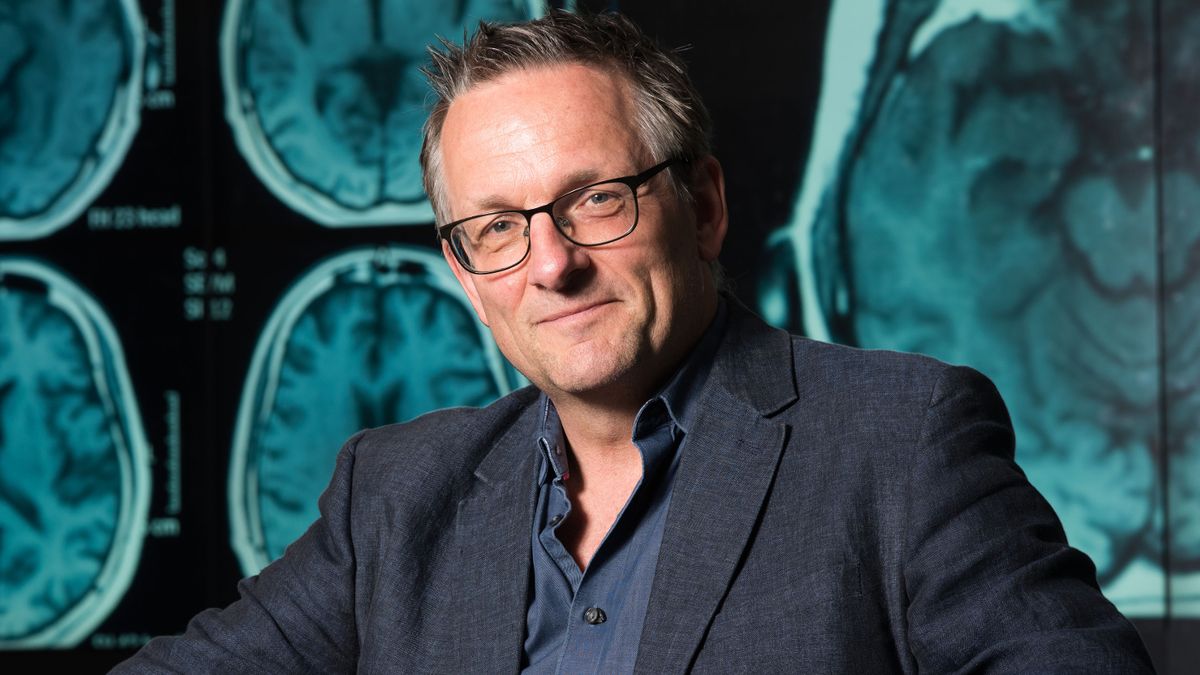
Dr Michael Mosley shares the one thing we should all be doing to improve our health If you’re trying to improve your health , you’ll know it isn’t as easy as just cutting out sugar and going for a run, but there are a whole lot of things we can do to help.
TV’s Dr Michael Mosley , the inventor of the famous 5:2 diet, has revealed just the one thing we really need to help improve our health and add years onto our life – and that is resistance training.
To some, that might sound terrifying, but even building a little bit of muscle will help us all out in a variety of ways, including weight loss, better sleep and a brain boost. Resistance training is the one thing we all should be doing to help improve our health according to the TV Dr So get ready to hit the gym, as experts also claim working out not only helps lose body fat, it also gives our brain a workout, with evidence suggesting that resistance training could have significant implications in the battle against dementia .
Dr Mosley warned: “Unless you do resistance exercises , your muscles start to decline after the age of 30.”
Speaking on his podcast “Just One Thing”, he explains that “Studies have shown that in just 12 weeks you can increase your muscle mass by up to 10 percent. And your strength by up 150 percent.”
On the episode ‘Stay Young’, he looked at how strength training can keep your body staying young at a cellular level as well as giving your brain a boost and the key to sleeping better too.
“This in turn can impact your whole body. For a start, it can give your brain a boost,” Dr Mosley explains.
“A review of dozens of studies on the effect of exercise on the over 50’s has shown that both aerobic and resistance training are good for the brain.
“But research has found that resistance training was especially good on memory and executive function, which improves things like problem solving.”
He also signifies that another benefit of resistance training is that it will help with a better night sleep.
Dr Mosley adds: “A recent study showed that a year long resistance exercise programme not only helped its participants sleep better, it also helped them sleep longer by nearly 20 minutes each night.” Not only does it build muscle but it will also help with sleep and gives a brain boost And it may also help with weight loss and stubborn belly fat , as the doctor said: “Resistance exercise could also help you lose fat, particularly around your belly.”
“Researchers at Harvard University followed over 10,000 men for 12 years, and they found, minute for minute strength training targets belly fat better than cardio,” the expert added.
It can also help to reduce your chances of diabetes, as the fat cells around your belly produces chemicals that can lead to negative effects on blood sugar levels.
“Muscle cells on the other hand have a positive effect, when you exercise they soak up blood sugars like a sponge,” Dr Mosley said.
“In fact one study found that for every 10 percent increase in your skeletal muscle, there was a ten percent reduction in your risk of prediabetes.
“Which means not only does building muscle make you look and feel younger, but it could also add years to your life.
“A recent analysis found that 30 to 60 minutes of resistance training a week reduces the risk of dying from heart disease and cancer by up to 20 percent.”
Some of the easiest resistance training exercises you can do easily at home include: squats, lunges, pull ups, and press ups. It’s recommended 30 minutes a day can help improve your health and lead to a healthy lifestyle.
Brain waves driven more by remembering an event than the event itself
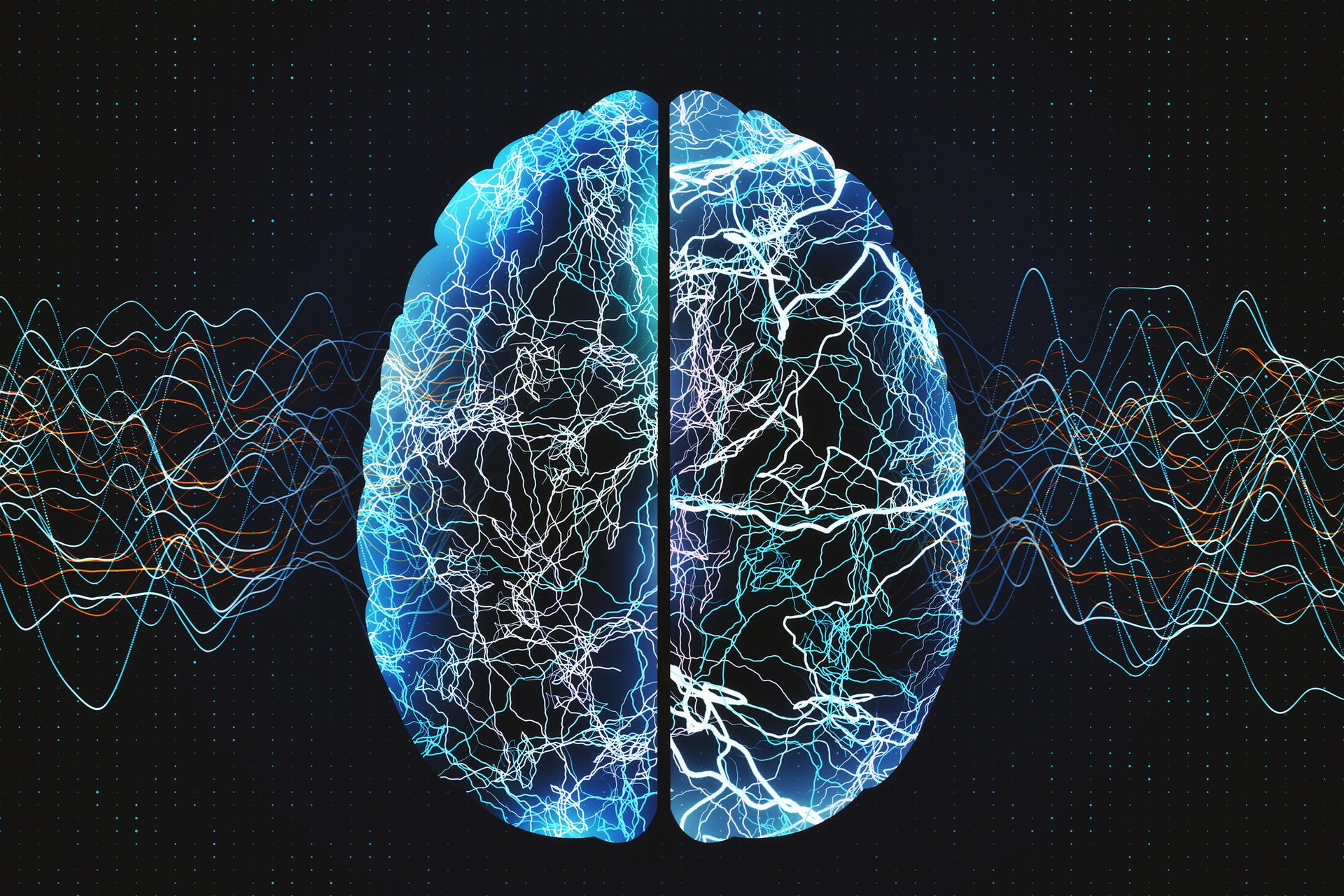
A study has found that remembering an event drives brainwave production more than engaging in the event does A new study has found that contrary to popular scientific belief, remembering an event drives the production of memory-related brain waves more than actually engaging in the event does. The finding could improve the treatment of memory loss in people with brain damage or cognitive impairments.
When many neurons are activated, they create rhythmical electrical pulses just like a wave of spectators raising their arms in a packed stadium, and produce a detectable reflection of what’s going on inside our brains.
These brain waves, or neural oscillations, fall into five categories – gamma, beta, alpha, theta, and delta – depending on their amplitude and frequency. We exhibit gamma waves when we’re problem-solving or learning, beta when alert or excited, alpha when we’re physically and mentally relaxed, theta during moments of creativity and meditation, and delta waves during deep, dreamless sleep.
Previous research has shown that theta oscillations in the hippocampus, a complex structure deep in the brain’s temporal lobe, are linked to memory formation and spatial navigation. A new study led by researchers from the University of Arizona has examined what drives the production of these theta oscillations.
It was thought that compared to memory formation, a person’s external environment had a more important role in driving theta oscillations. That is, the oscillations produced while engaged in an event were greater than those produced when creating a memory of that event. However, the current study suggests this is not the case.
“Surprisingly, we found that theta oscillations in humans are more prevalent when someone is just remembering things, compared to experiencing events directly,” said Sarah Seger, lead author of the study.
The researchers recruited 13 patients being monitored for epileptic seizures using intracranial electrodes and recorded their hippocampal theta oscillations. The patients undertook a spatial navigation task on a laptop computer, using a joystick to navigate a virtual reality (VR) city to reach a particular store. When they reached the destination, the experiment was paused, and the patients were asked to imagine the location where they started their navigation and to mentally navigate the route they just took.
During the joystick-driven navigation process, theta oscillations were less frequent and shorter in duration compared to oscillations that occurred when patients were only imagining the route. Based on their findings, the researchers concluded that memory is the main driver of theta activity in humans.
They say their findings could be used to help improve memory in people with brain damage or cognitive impairments caused by stroke, seizures or diseases like Parkinson’s disease. Engaging in cognitive training and rehabilitation by having people actively create memories would drive theta oscillations, which has the potential to improve memory over time, the researchers say.
“Basically, you take a patient who has memory impairments, and you try to teach them to be better at memory,” said Arne Ekstrom, corresponding author of the study.
The researchers are planning to conduct further research with freely walking patients rather than patients who are in bed to see how actual navigation affects theta oscillations compared to memory.
The study was published in the journal Neuron .
6 Best Foods for Brain Health: How to Boost Your Memory and Cognition Naturally
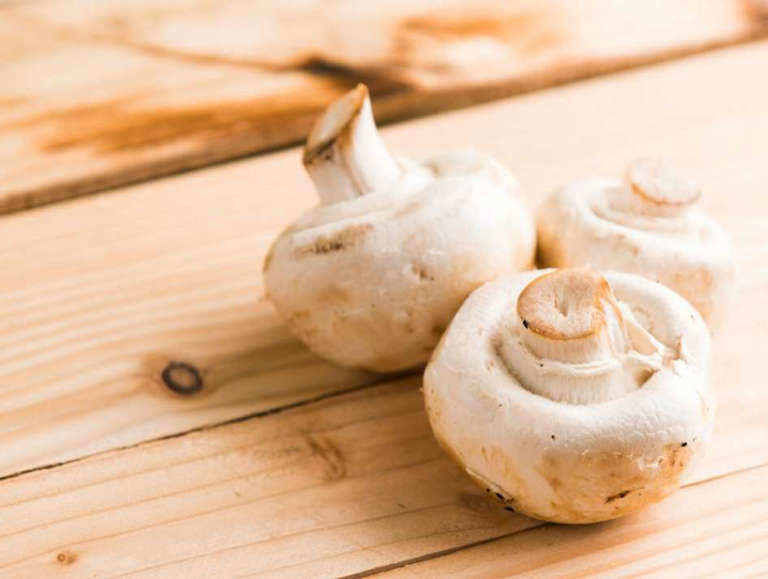
Our choices of foods matter for overall well-being, moods, appearance to brain function. When striving for staying mentally sharp for learning, memory and slowing down brain aging, these foods are six of the best for brain health.
Mushrooms are at the top of the list due to their amazing array of micronutrients that keep the immune system healthy. They also can protect the brain against cognitive decline that is possibly linked to Alzheimer’s disease. Thanks to their specialized bioactives, including polysaccharides, peptides, and phenols, there has been fascinating research how adding mushrooms, especially white button, golden, oyster or shiitake mushrooms can boost nerve growth and improve thought processing. According to one Chinese study just one cup of mushrooms per week showed promising results to strengthen memory performance by 50% and cognitive impairment. Another interesting study went further and suggested that Alzheimer’s disease (AD) could possibly benefit from Hericium erinaceus, or the monkey head mushroom.
Dark chocolate is another wonderful choice for brain health due to its plant flavonoids and antioxidants. This food is already great for lowering blood pressure and preventing heart disease, but to those natural compounds, it also helps with learning, memory and the brain to be mentally stimulated and younger. Yet, you also need to exert some caution due to some brands that may have high levels of cadmium and lead according to a 2022 article in Consumer Reports . For this reason, you may want to check out their list of the brands to avoid, especially if you eat the dark chocolate daily.
Nuts are next when naming the best foods for assisting with brain performance due to their superior brain-enhancing nutrients and bounty of vitamin E that also can safeguard those cells from deteriorating as rapidly for slower brain aging. Walnuts , in particular, are the best for aiding brain health because of their unique omega-3 fatty acid called alpha-linolenic acid, which can also lower blood pressure and cleanse plague from the arteries.
Fruits from apples, citrus to berries are all ideal foods for their low calories, fighting blood pressure, cancer, diabetes, and heart disease while helping digestion due to all their fiber. Apples just like oranges contain vitamin C to prevent cognitive decline, but quercetin , an antioxidant that helps keep neurotransmitters working for optimal healthy brain function. Berries, grapes and cherries are a rich source of flavonoids that have been proven to improve memory. The darker the berry, the more benefits these type of fruit provide the brain.
Something else to boost cognitive functioning is eating more fatty fish. The reason this food can help is because of all the omega-3 fatty acids that can reduce blood levels of beta-amyloid, a protein that has a tendency to create harmful clumps in the brain of those diagnosed with Alzheimer’s disease. The best varieties are salmon, canned light tuna and pollock that have the least amount of mercury.
Coffee often gets a bad rap for our health. However, its caffeine raises serotonin and acetylcholine that help galvanize the brain and steady how blood flows. In addition, it has polyphenols to keep brain tissues healthier and safeguard against blockages in those crucial blood vessels.
If you are trying to keep your memory sharp and learning processes at their best, then these six foods for brain health are worth supplementing your diet with. You also may want to read my earlier post on the best brain snacks when that urge hits. After all, food is nature’s medicine.
The post 6 Best Foods for Brain Health: How to Boost Your Memory and Cognition Naturally appeared first on Beauty Cooks Kisses .
Aging and the Brain: How Probiotics Could Slow Cognitive Decline
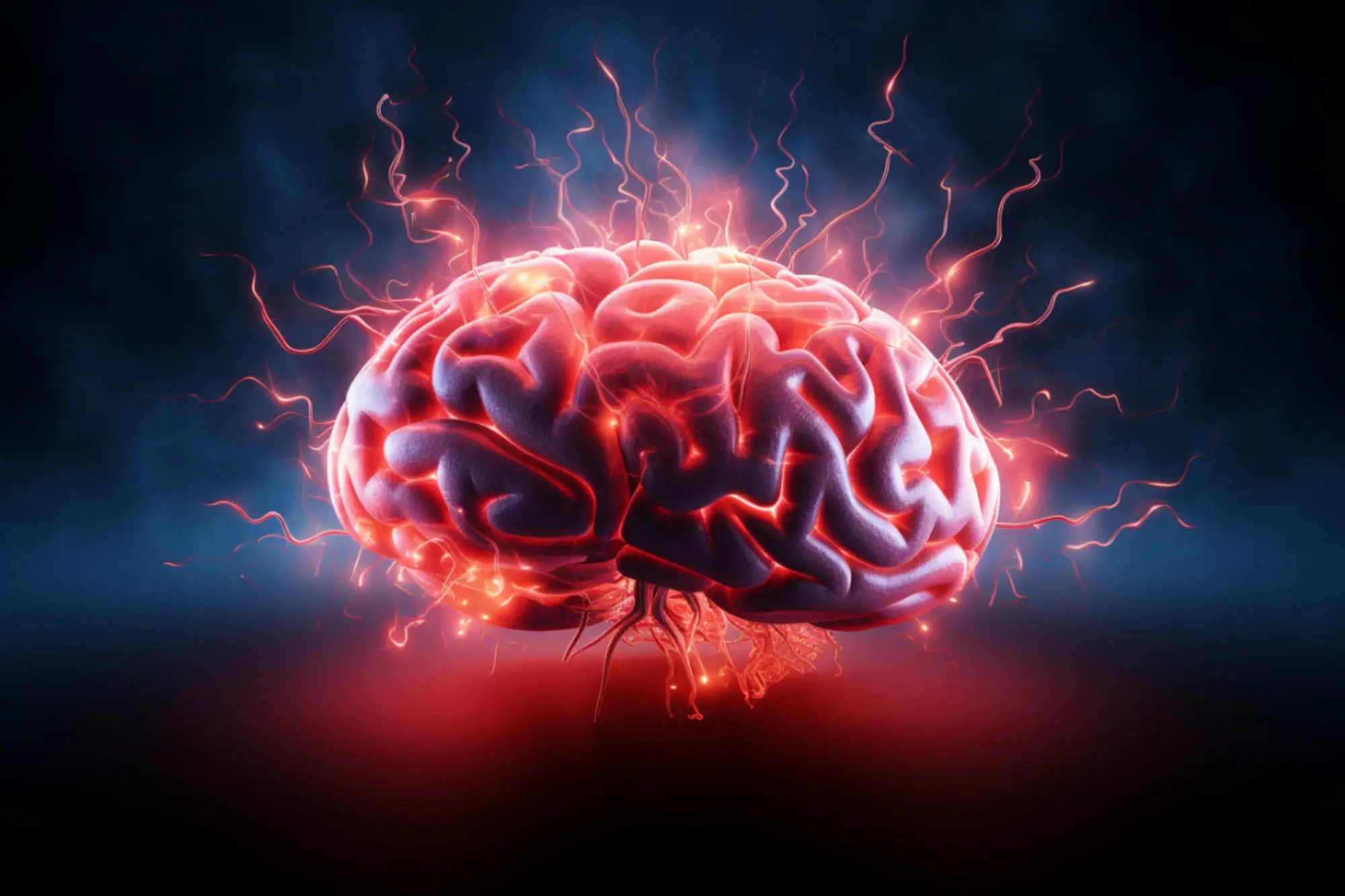
A recent study indicates that probiotics may improve cognitive function and potentially prevent age-related cognitive decline by modulating the gut microbiome. Particularly in individuals with mild cognitive impairment, shifts in gut microbiome composition, such as decreases in the abundance of Prevotella bacteria, correlated with improved cognitive scores. Recent findings point to a key role of the gut in maintaining brain health.
Results from a recent study indicate that the use of a probiotic may help prevent the decline in memory and thinking that can accompany aging. This discovery could lay the groundwork for innovative, non-invasive methods that utilize the gut microbiome to lessen cognitive deterioration in the elderly.
The scientists discovered that the cognitive scores of study participants who were experiencing mild cognitive impairment improved after receiving the probiotic Lactobacillus rhamnosus GG (LGG) for a three-month period. This improvement in cognitive function was also linked to alterations in their gut microbiome.
“The implication of this finding is quite exciting, as it means that modifying the gut microbiome through probiotics could potentially be a strategy to improve cognitive performance, particularly in individuals with mild cognitive impairment,” said Mashael Aljumaah, a microbiology doctoral candidate at the University of North Carolina at Chapel Hill and North Carolina State University . “This adds a new layer to our understanding of the microbiome brain-gut connection and opens up new avenues for combating cognitive decline associated with aging.”
Aljumaah, who is also affiliated with King Saud University in Saudi Arabia, recently presented the findings at NUTRITION 2023, the annual flagship meeting of the American Society for Nutrition held July 22-25 in Boston.
“Many studies focus on severe forms of cognitive diseases such as Alzheimer’s and dementia, but these conditions are more advanced, making them significantly harder to reverse or treat,” said Aljumaah. “In contrast, we focused on mild cognitive impairment, which can include problems with memory, language, or judgment. Interventions at this stage of cognitive impairment could slow down or prevent the progression to more severe forms of dementia.”
Graphical abstract. Credit: Mashael Aljumaah, University of North Carolina at Chapel Hill and North Carolina State University
The study involved 169 participants between 52 and 75 years old who were divided into two groups depending on whether they had no neurological issues or mild cognitive impairment. Within each group, participants either received the LGG probiotic or a placebo in a double-blind, randomized clinical trial lasting three months. The researchers selected the LGG probiotic because prior research had shown its potential beneficial effects in animal models.
To investigate the study participants’ gut microbiomes, the researchers used 16S rRNA gene sequencing to identify and compare bacteria present in stool samples. They then used whole genome sequencing to gain insights into the functional roles of the bacteria identified.
The analysis revealed that microbes in the genus Prevotella were present in a higher relative abundance in participants with mild cognitive impairment than in those with no cognitive impairment. This suggests that gut microbiome composition could serve as an early indicator for mild cognitive impairment, offering opportunities for earlier interventions to slow cognitive decline.
For study participants who had mild cognitive impairment and received the LGG probiotics, the Prevotella relative abundance decreased. This change coincided with improved cognitive scores, suggesting that cognitive health in older adults could be improved by manipulating the gut microbiota.
“By identifying specific shifts in the gut microbiome associated with mild cognitive impairment, we’re exploring a new frontier in preventive strategies in cognitive health,” said Aljumaah. “If these findings are replicated in future studies, it suggests the feasibility of using gut microbiome-targeted strategies as a novel approach to support cognitive health.”
The researchers are now working to understand the specific mechanisms of how microbes like Prevotella influence the gut in a way that improves brain health. Specifically, they are exploring how certain molecules produced by these bacteria modulate the functionality of neuroprotective hormones that can cross the blood-brain barrier.
Reference: “The Gut Microbiome, Mild Cognitive Impairment, and Probiotics: a Randomized Clinical Trial in Middle-Aged and Older Adults” by Mashael R. Aljumaah, Andrea M. Azcarate-Peril, Jeffery Roach, John Gunstad and Urja Bhatia, 24 July 2023, NUTRITION 2023 ( abstract ; presentation details ).
New study links brain waves directly to memory
Neurons produce rhythmic patterns of electrical activity in the brain. One of the unsettled questions in the field of neuroscience is what primarily drives these rhythmic signals, called oscillations. University of Arizona researchers have found that simply remembering events can trigger them, even more so than when people are experiencing the actual event.
The researchers, whose findings are published in the journal Neuron , specifically focused on what are known as theta oscillations, which emerge in the brain’s hippocampus region during activities like exploration, navigation and sleep. The hippocampus plays a crucial role in the brain’s ability to remember the past.
Prior to this study, it was believed that the external environment played a more important role in driving theta oscillations, said Arne Ekstrom, professor of cognition and neural systems in the UArizona Department of Psychology and senior author of the study. But Ekstrom and his collaborators found that memory generated in the brain is the main driver of theta activity.
“Surprisingly, we found that theta oscillations in humans are more prevalent when someone is just remembering things, compared to experiencing events directly,” said lead study author Sarah Seger, a graduate student in the Department of Neuroscience.
The results of the study could have implications for treating patients with brain damage and cognitive impairments, including patients who have experienced seizures, stroke and Parkinson’s disease, Ekstrom said. Memory could be used to create stimulations from within the brain and drive theta oscillations, which could potentially lead to improvements in memory over time, he said.
UArizona researchers collaborated on the study with researchers from the University of Texas Southwestern Medical Center in Dallas, including neurosurgeon Dr. Brad Lega and research technician Jennifer Kriegel. The researchers recruited 13 patients who were being monitored at the center in preparation for epilepsy surgery. As part of the monitoring, electrodes were implanted in the patients’ brains for detecting occasional seizures. The researchers recorded the theta oscillations in the hippocampus of the brain.
The patients participated in a virtual reality experiment, in which they were given a joystick to navigate to shops in a virtual city on a computer. When they arrived at the correct destination, the virtual reality experiment was paused. The researchers asked the participants to imagine the location at which they started their navigation and instructed them to mentally navigate the route they just passed through. The researchers then compared theta oscillations during initial navigation to participants’ subsequent recollection of the route.
advertisement
During the actual navigation process using the joystick, the oscillations were less frequent and shorter in duration compared to oscillations that occurred when participants were just imagining the route. So, the researchers conclude that memory is a strong driver of theta oscillations in humans.
One way to compensate for impaired cognitive function is by using cognitive training and rehabilitation, Ekstrom said.
“Basically, you take a patient who has memory impairments, and you try to teach them to be better at memory,” he said.
In the future, Ekstrom is planning to conduct this research in freely walking patients as opposed to patients in beds and find how freely navigating compares to memory with regard to brain oscillations.
“Being able to directly compare the oscillations that were present during the original experience, and during a later retrieval of that is a huge step forward in the field in terms of designing new experiments and understanding the neural basis of memory,” Seger said.
Living a Varied Life Boosts Brain Connectivity in Mice
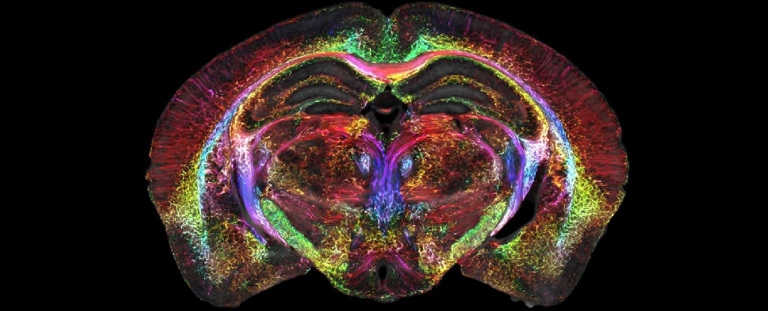
The brains in mice benefit from an active and varied lifestyle by forming enhanced neural connections.
Researchers in Germany compared the brain activity of mice raised in different environments and found those raised in an ‘enriched’ environment had more activity in their hippocampus , suggesting the presence of a more robust and connected neural network.
Because of its central role in learning and memory, the human hippocampus is frequently affected by degenerative brain diseases like Alzheimer’s .
“The results by far exceeded our expectations,” says neuroscientist and biomedical engineer Hayder Amin from the German Center for Neurodegenerative Diseases (DZNE), “Simplified, one can say that the neurons of mice from the enriched environment were much more interconnected than those raised in standard housing.”
The findings, based on Amin and colleagues’ “brain-on-chip” technology and computational analysis tools, could help to support and prevent brain dysfunctions and lead to new brain-inspired artificial intelligence methods.
“We have uncovered a wealth of data that illustrates the benefits of a brain shaped by rich experience,” says Gerd Kempermann, an adult neurogenesis researcher at DZNE.
The scientists compared brain tissue from two groups of 12-week-old mice whose experiences began from six weeks of age. One group lived in standard cages that had no special features or fun activities to partake in, just food, water, and nesting materials.
The other group had the time of their lives in larger cages with toys, tunnels, plastic tubes fashioned into mazes, extra nesting material, and little houses, which sure does sound like a great weekend, even for a human.
The researchers examined brain tissue using a complementary metal–oxide–semiconductor (CMOS) based neurochip with 4,096 electrodes to record the firing of thousands of neurons at once.
They were able to measure connectivity between the entire hippocampus and the brain’s outer layer that governs a whole heap of cognition processes, which they grouped into six interconnected hippocampal-cortical regions.
“No matter which parameter we looked at, a richer experience literally boosted connections in the neuronal networks,” says Amin. “These findings suggest that leading an active and varied life shapes the brain on whole new grounds.”
It’s been known for some time that our experiences leave a mark on our brain’s connectivity, but this demonstrates just how significant those marks can be.
“All we knew in this area so far has either been taken from studies with single electrodes or imaging techniques like magnetic resonance imaging ,” Kempermann explains . “Here, we can literally see the circuitry at work down to the scale of single cells.”
Amin, Kempermann, and the rest of the team hope their tools could be expanded to look at how social interactions, physical activity, and learning processes, all of which have a big impact on how the brain works, affect the brain’s function.
Of course, the results were seen in mice brains, not humans, but studying the entire hippocampus gives them a larger-scale view of functional connectivity .
The scientists think that mapping and understanding how experiences change the connectome could help find the mechanisms that cause brain dysfunctions and identify new targets for more effective treatments in the future.
Their platform could lay the groundwork for prosthetic devices that mimic brain functions to restore and improve memory capabilities lost due to aging or disease.
“This paves the way to understand the role of plasticity and reserve formation in combating neurodegenerative diseases, especially with respect to novel preventive strategies,” Kempermann says .
“Also, this will help provide insights into disease processes associated with neurodegeneration, such as dysfunctions of brain networks.”
The study has been published in Biosensors and Bioelectronics .
Studies show common prescription medications raise DEPRESSION risk
Numerous studies have associated certain prescription with the emergence or worsening of depression symptoms.
A recent study published in JAMA found that more than a third of U.S. adults are taking prescription medications that could potentially cause depression or increase suicide risk.
While not a comprehensive list, the following are common types of pharmaceutical drugs that have been found to cause depression symptoms. (Related: 10 Classes of medication that can cause or worsen DEPRESSION .) Medications that influence hormones
Hormonal contraceptives are known to cause depression in some patients.
A study published in the journal Australian Prescriber indicated that the link between oral contraceptive pills and depression relates to the amount and type of progestogen contained in the pills. Many of the older oral contraceptive pills, which contain ethinylestradiol, are linked to severe mood problems.
The study warned that progestogen-only contraceptives increase the likelihood of developing depressive disorders in vulnerable women.
The researchers said it is critical for clinicians to consider the history given by many women of a clear temporal relationship between starting or using a hormonal contraceptive and the development of new or worsened depression. Benzodiazepines
Benzodiazepines (benzos) are a class of medications used to treat anxiety disorders, insomnia and seizures, in addition to being used as a sedative before surgery.
Benzos do not cause depression, but they can contribute to the development of depression and worsen symptoms in people suffering from depression. You can think of benzos as more of a catalyst for depression rather than a direct cause.
Long-term benzo abuse is believed to not only cause addiction but also contribute to mental illnesses. Beta-blockers
Beta-blockers are generally prescribed for the treatment of high blood pressure, although they may also be used to treat angina, irregular heartbeat, migraines and tremors. They may also be given as eye drops for the treatment of glaucoma.
There is some debate about the degree to which these medications may cause depression, but they are commonly associated with depression symptoms , such as fatigue, listlessness and sexual problems (erectile dysfunction), explained Dr. Randall Zusman, a cardiologist at Harvard-affiliated Massachusetts General Hospital. Neurologic medications for the treatment of seizure disorders
A study published in the journal Dialogues in Clinical Neuroscience reported that most anticonvulsants have been linked to the development of depressive symptoms in a small percentage of patients. In particular, barbiturates, vigabatrin, and topiramate are said to be more of a catalyst than others.
Patients at high risk of depression who are prescribed these medications should be monitored for the emergence of depression. Medications for the treatment of Parkinson’s disease
Drugs used in the treatment of Parkinson’s disease affect a substance in the brain called dopamine – the “feel good” neurotransmitter.
Researchers have found that abnormalities in dopaminergic transmission may contribute to the high prevalence of depression in patients with Parkinson’s disease.
The mainstay of therapy for patients with Parkinson’s is dopamine replacement – typically with levodopa – which has been suspected of causing depression.
A randomized controlled trial published in the journal Acta Neurologica Scandinavica reported a significant increase in depression among patients treated with levodopa for one year. Medications for the treatment of migraine headaches
Flunarizine, a calcium-channel antagonist used for acute and prophylactic treatment of migraine headaches, has been associated with depression.
In a randomized, double-blind, prospective study published in the journal Headache , eight percent of flunarizine-treated patients developed depressive symptoms that led to treatment discontinuation.
As a result of this medication’s effect on mood and its propensity to cause extrapyramidal symptoms, it is now only used as a second-line treatment for patients with migraines. Proton-pump inhibitors (PPIs)
These medications are commonly prescribed to treat gastroesophageal reflux disease (GERD) and peptic ulcers. One example is omeprazole, which is sold under the brand names Prilosec and Losec.
A study published in the journal International Psychogeriatrics which involved more than 300 inhabitants of Tuscania (a town Italy) reported that proton pump inhibitors are a frequent cause of depression in older populations.
Higher PPI dosages were found to be linked to an increased risk of depression, highlighting the need for the mental health of elderly patients on PPIs to be routinely checked by their healthcare providers.
There are many more commonly prescribed medications that can cause depression or other serious side effects. Learn more about them at BadMedicine.news .Watch this video to learn about medications that change your personality . This video is from the Objective: Health channel on Brighteon.com . More related stories: STUDY: These prescription medications can increase your risk of depression . Understanding the placebo effect and its role in depression treatment . Top 7 ways to snap out of depression and isolation turmoil stemming from the pandemic . Sources include: JAMANetwork AustralianPrescriber.tg.org.au BanyanMentalHealth.com Harvard.edu TAndFOnline.com OnlineLibrary.Wiley.com HeadacheJournal.OnlineLibrary.Wiley.com Cambridge.org Brighteon.com
Yes, heat can affect your brain and mood. Here’s why

Extreme heat can slow cognition and increase anxiety, research finds. If you’re feeling a bit brain-fogged these days, you might not be wrong to blame it on the heat.
Several summers back, researchers in Boston studied young adults living in college dorm rooms during a heat wave. Some had central AC, and slept at a cool 71 degrees Fahrenheit. But others slept in rooms without air-conditioning, where the temperature hovered around 80 degrees.
Each morning for nearly two weeks the students took a few tests, administered on their cell phones. The people who slept in the hotter dorm rooms performed measurably worse on the tests.
The tests included a math test requiring simple addiction and subtraction and a second test, the Stroop test , that jumbles colors and words. “So, if I show the word ‘red’ in the color blue, participants have to respond ‘blue’,” says study author Jose Guillermo Cedeño Laurent, an assistant professor at the Rutgers School of Public Health.
It’s easy to get tripped up if your attention or reaction time is slowed, he says, and that’s exactly what heat appears to be doing. “The magnitude of the effect was really striking,” Cedeño Laurent says. ” We saw reductions in the order of 10% in their response times and also their accuracy.”
Part of this effect may be explained by interrupted sleep. It can be hard to get a good night’s rest if you’re not accustomed to the heat, and a lack of sleep could certainly impair reaction time and focus. But there’s a body of evidence suggesting it may be something about the heat itself that interferes with cognition.
A similar study published in 2021 also documented a dip in cognitive performance at air temps of 79 degrees . Researchers found that as the temperature rose, activity in the parasympathetic nervous system, the anti-stress system that can help us stay calm and relaxed, was lowered. Plus oxygen saturation levels in the blood were lower at the elevated temperatures as well, which the researchers said could be expected to result in reduced cognitive performance.
Other studies have found an effect from heat on office workers and on standardized test score performance, says Caleb Dresser , an emergency medicine physician who also serves as the director of health care solutions at the Harvard Chan Center for Climate, Health and Global Environment.
One of these studies showed that productivity in the workplace is highest when the air temperature is about 72 degrees, and productivity starts to drop off in the mid-70s . And another shows that for high school students, taking a standardized test on a hot day is linked to poorer performance .
Dresser says the evidence suggests that heat can influence us in sometimes indiscernible ways. “All of these [studies] seem to point to a reduced ability to think clearly and quickly and efficiently when the body is too hot,” he says.
There’s also research to suggest that heat can make you moodier or irritated, in part, perhaps, by raising cortisol levels, and inducing a stress response .
Of course, you can acclimate to heat after several days of exposure, and our bodies have several built-in coping mechanisms that help us cool down. For instance, you’ll begin to sweat sooner and blood flow to the skin increases, which can carry heat away from the body’s core.
But, given the extreme heat waves that are becoming more common, there’s increasing interest in better understanding the mechanisms by which heat may exacerbate or set off mood and anxiety-related problems. Dresser points to a study published in JAMA Psychiatry in 2022 that found hospital ER visits, for mental health conditions, rise during extremely hot days .
“I think this is consistent with what a lot of physicians will tell you if they have worked during hot conditions,” Dresser says. Mental health is a concern all of the time, “but it can become a bigger concern during really hot conditions,” he says.
Multiple factors likely explain how heat exacerbates the risks, beyond changes in stress hormones and sleep disturbances. Dresser points out that there’s an overlap between populations who are vulnerable to mental health issues and populations that are unhoused or have intermittent access to housing.
And, clearly, if someone is living outside during a heat wave, there’s a greater likelihood of significant impact. “There may be complicated social issues going on,” he says.
A better understanding of all of these factors could help inform strategies to prevent or manage the challenges. “As we learn to live in a warming world where the summers are getting hotter, we need to be extra alert to recognize when conditions are dangerous and take steps to stay safe,” Dresser says.
One of the key strategies is to stay well hydrated. This may sound obvious, but dehydration is common in the summer, and many people underestimate how much fluid they need to replace when they’re sweating a lot or spending time outdoors.
In fact, the participants in the college dorm study benefited from staying well-hydrated. During the study, the researchers sent text messages asking all the participants how much liquid they’d consumed, and it turned out that the participants who slept in the hot dorm rooms, and drank less than 6 glasses of liquid per day, performed worse on the tests. And prior research has shown that being even a little dehydrated can impair cognitive performance.
It’s a reminder that a simple step – remembering to drink plenty of water – can help protect not just our physical health, but our mental wellbeing, too.
Copyright 2023 NPR. To see more, visit https://www.npr.org.
Approaching Tasks with a Curious Mindset May Enhance Memory
Approaching tasks with a curious as opposed to a high-pressure mindset may improve memory. The corresponding study was published in PNAS .
For the study, researchers recruited 420 adults to play a computer game in which they would partake in an art museum heist. The participants were randomly assigned into one of two groups with different prompts. The first prompt aimed to stir urgency in the participants by telling them they were a ‘master thief’ and in the middle of a heist. The second group was told they were thieves scouting a museum to plan a future heist.
After receiving each of the prompts, the two groups played the same game in the same way, which involved exploring an art museum and finding paintings of different values behind different doors. A day later, they completed a pop quiz in which they were asked whether they could recognize 175 paintings, 100 of which were from the game and 75 of which were new. If patients flagged a painting as familiar, they also had to recall how much it was worth.
“The curious group participants who imagined planning a heist had better memory the next day,” said Alyssa Sinclair, Ph.D., a postdoctoral researcher working in the lab of Duke Institute for Brain Sciences, and one of the study’s authors, in a press release .
Third-party media, can we show it?
This media is from an external source. It might use cookies and has its own privacy policy. Your IP may be exposed to that party if you allow.
“They correctly recognized more paintings. They remembered how much each painting was worth. And reward boosted memory, so valuable paintings were more likely to be remembered. But we didn’t see that in the urgent group participants who imagined executing the heist,” she continued.
The researchers noted, however, that those who were told they were in the middle of a heist were better at figuring out which doors hid more expensive paintings and thus managed to accumulate more of them and finish with more ‘stash’.
They concluded that while the curiosity-driven mindset enhanced memory, the high-pressure mindset led to higher game scores. They noted that this infers that while high-pressure mindsets may be useful for short-term problems- such as being confronted by a bear on a hike or when encouraging people to be vaccinated- a curiosity-driven mindset may be better-suited for encouraging longer-term memory or action.
“Sometimes you want to motivate people to seek information and remember it in the future, which might have longer term consequences for lifestyle changes. Maybe for that, you need to put them in a curious mode so that they can actually retain that information,” said Dr. Sinclair.
